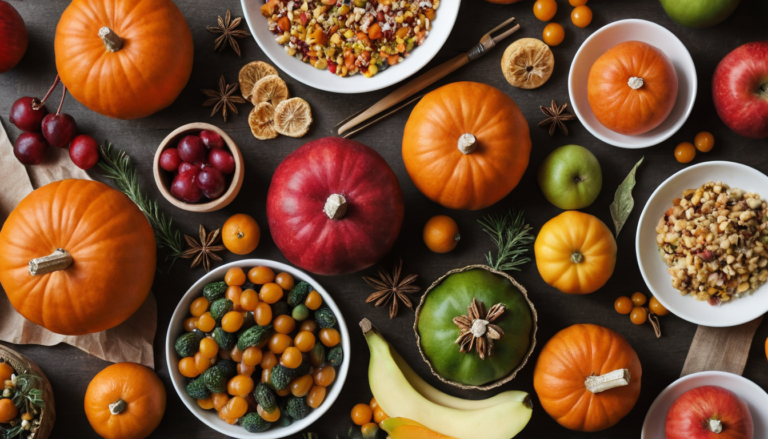In today’s fast-paced world, the idea of seasonal eating might seem outdated or inconvenient. With grocery stores filled with produce from all over the globe, it’s easy to buy whatever you want, whenever you want. However, there’s a growing movement that encourages us to embrace seasonal eating, and for good reason! This article will explore the significance of dining in tune with the seasons and the numerous benefits it holds for our health, the environment, and our community.
The Connection Between Seasonality and Freshness
One of the primary reasons to eat seasonally is freshness. Seasonal produce is typically harvested at its peak, meaning it’s more flavorful, fragrant, and nutritious. When fruits and vegetables are grown and harvested in their proper season, they absorb more sunlight and nutrients, resulting in a better taste and higher vitamin content.
Moreover, foods that are in season are often picked and sold locally. This minimizes the time from farm to table, ensuring that the produce is fresher than off-season counterparts, which may have traveled long distances, losing flavor and nutritional value along the way. By focusing on what is currently in season, you can enjoy the rich flavors and health benefits that local, fresh produce offers.
The Health Benefits of Eating Seasonally
Eating seasonally not only enhances flavor but also supports better overall health. Different fruits and vegetables peak at different times of the year, offering a wide variety of nutrients that are beneficial for our bodies. For example:
- Spring: Foods like asparagus, peas, and strawberries emerge, offering vital vitamins and antioxidants that help detoxify your body after winter.
- Summer: This season boasts an array of fruits and vegetables like tomatoes, peppers, and melons, which are hydrating and rich in vitamins A and C.
- Fall: Root vegetables like carrots, sweet potatoes, and pumpkins are plentiful, providing essential nutrients and fiber that are important for the immune system.
- Winter: While fresh produce may be limited, options like kale, citrus fruits, and squash can boost health through antioxidants and vitamin C, beneficial for fighting colds.
By consuming the foods that are naturally available during each season, you provide your body with the nutrients it needs to thrive at any given time, aligning perfectly with nature’s cycles.
Environmental Benefits
Eating in season not only improves personal health but also contributes to a healthier planet. When you purchase local in-season food, you are:
- Reducing Carbon Footprint: Seasonal produce requires fewer resources for transportation, storage, and preservation. This ultimately cuts down on greenhouse gas emissions associated with long-distance food transport.
- Supporting Local Farmers: Buying local produce boosts local economies. Farmers benefit from stable sales, which in turn fosters community growth and sustainability.
- Encouraging Biodiversity: Focusing on seasonal eating promotes a greater variety of crops, which is essential for maintaining healthier ecosystems. This can help combat issues like monocropping and enhance soil health.
Culinary Creativity and Learning
Eating seasonally challenges you to diversify your diet and become more creative in the kitchen. Engaging with whatever is in season encourages you to explore new recipes and cooking techniques. You might find yourself trying out dishes that you would have otherwise overlooked. As you learn to adapt your cooking with the seasons, you begin to appreciate the unique flavors and textures that each season brings.
Seasonal eating also invites you to develop a deeper connection with the food you consume. From farmers’ markets to local farms, learning where your food originates fosters an appreciation for the agricultural process and the hard work that goes into producing your meals. It creates an opportunity to engage with your community, meet vendors, and explore local food cultures.
How to Get Started with Seasonal Eating
If you’re inspired to start eating with the seasons, here are some practical tips to help you get started:
- Research Seasonal Produce: Depending on your location, familiarize yourself with what fruits and vegetables are in season during each month. Local agricultural extension services or websites can be valuable resources.
- Visit Farmers’ Markets: Explore local farmers’ markets to obtain fresh, seasonal produce while supporting local farmers. Meeting the people who grow your food adds a personal touch to your seasonal eating journey.
- Join a CSA: Community Supported Agriculture (CSA) programs offer subscriptions to local produce. This is a great way to guarantee a variety of seasonal foods while supporting sustainable farming practices.
- Plan Seasonal Menus: Create menus around seasonal produce weekly. This encourages creativity and also helps reduce food waste by consuming ingredients that are at their peak.
- Preserve Seasonal Foods: Consider canning, freezing, or drying excess produce to enjoy seasonal flavors throughout the year.
Conclusion
Seasonal eating isn’t just a trend; it’s a philosophy that emphasizes healthier, more sustainable food choices. By aligning your eating habits with the seasons, you can enjoy fresher, tastier food while contributing positively to your health, the environment, and the local community. With benefits that reach beyond your plate, seasonal eating can lead to a more fulfilling connection with the food you consume. So next time you shop for groceries, think seasonally. Your body—and our planet—will thank you!



